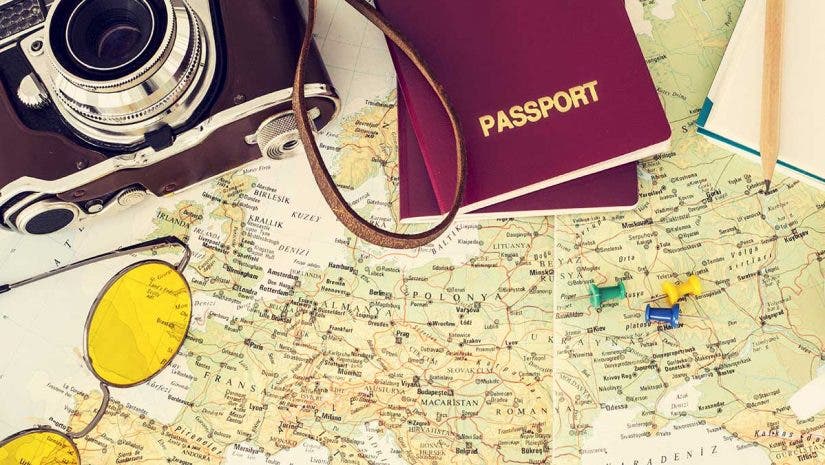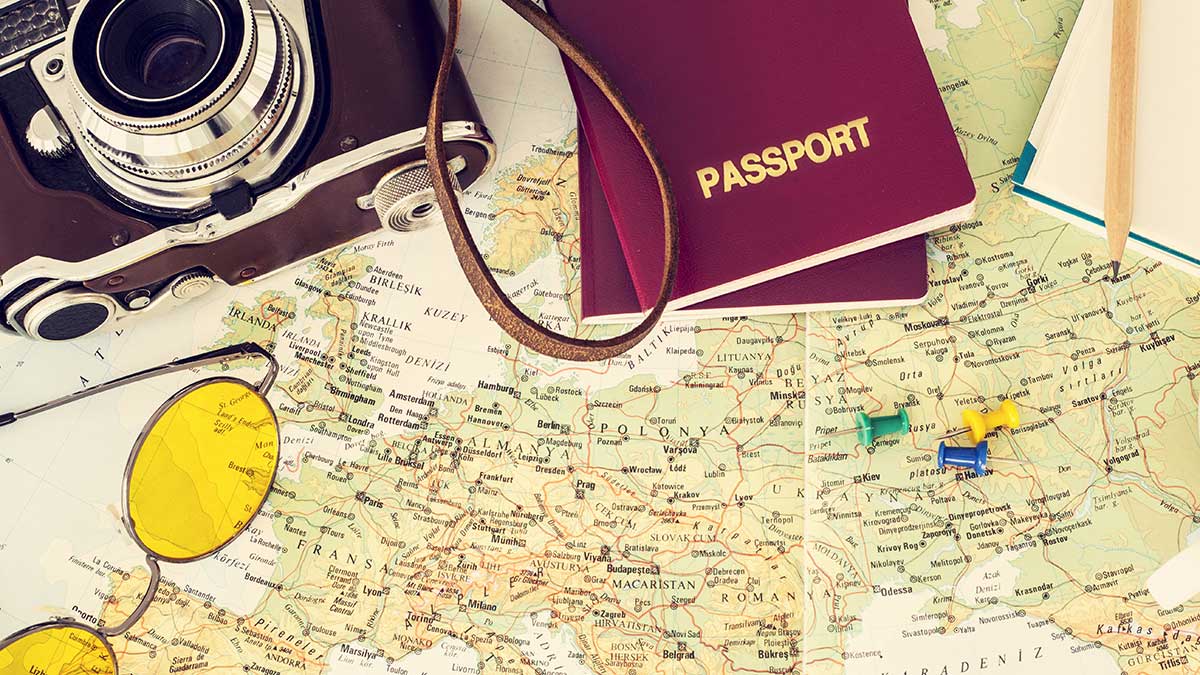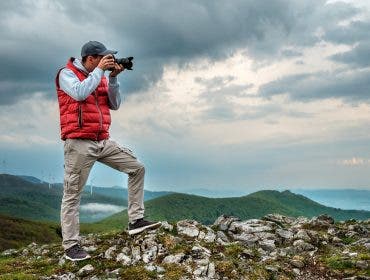Library in Amsterdam’s Rijksmuseum
By Michael Becker
To see how unique traveling is to each individual, one can simply examine each traveler’s choice of travel plans, luggage, and accessories. This holds particularly true to the modern advent of technology in cameras and smart phones. There are the purists who stick strictly to DSLRs for either Canon or Nikon, those who swear by Apple and those who love the freedom of Androids. For my recent adventures across central and Eastern Europe, I was given the opportunity to try something new- I ditched my habit of exclusively using an iPhone as my camera and experienced the world with a digital mirrorless camera. My gear consisted of: Olympus OM-D E-M5 Mark II along with Olympus M. Zuiko 40-150 MM F2.9 Lens, 17mm F/1.8 Lens, and 14-150mm f/4-5.6 II Lens.
I am a high school English teacher and have been fortunate to travel the world personally and as a chaperone for my students since 2010. I’m a minimalist traveler, opting for the backpack and essentials compared to the jam-packed suitcase; however, I am a traveler who loves his technology. Early on I traveled with a simple point-and-shoot camera, thinking more megapixels meant better photos. Later as technology, photography apps, and smart phone cameras evolved, I traveled exclusively with an iPhone as my camera. In 2012 I started dating a graphic designer and photographer who opened me up to the world of photography and the critical components of using a DSLR, but I did not learn nearly enough to experience the world as a traveler with a high tech DSLR hanging around my neck. I was still a minimalist traveler at heart and my skills with a DSLR were nowhere up to par to require carrying one around.
For this year’s trip, I did not chaperone students and instead traveled with my girlfriend (and I’m pleased to announce that during this trip she became my fiancé!) to the Netherlands, Germany, and Poland. The two of us packed 5 cities in 12 days, carrying only backpacks and plenty of walking. She was the photographer; I was the novice with a fancy new camera and bit of a learning curve ahead of me.
The Experience:
Overall the experience of carrying a camera in either a backpack or around my neck is unquestionably unique compared to carrying around an iPhone in my pocket. My photographer girlfriend helped me set the camera up and learn the basic functions before we departed, but she also struggled with learning and using the strictly touch-screen functionality at times.In the first days of the trip, it was somewhat burdensome, another thing to keep tabs on compared to simply having a slim phone in my pocket, but that feeling gradually changed. As I adjusted to jet lag and carried around a map for directions, carrying the camera and having it ready to take pictures was somewhat of a nuisance; it was easier to keep it in the backpack and have the map accessible. As the saying goes, ‘old habits die hard,’ so I had to force myself to have the camera around my neck ready to take pictures instead of reaching for my pocket.
Within a day or two I grew more accustomed to the camera, its functions, and its usage. I stuck mostly with the 14-150mm lens, which provided great shots from close up personal shots to some of the beautiful buildings and sights around us. In a city such as Amsterdam or Munich, it was provided quality pictures of the overall sights mixed with the ability to zoom in on certain features of cathedrals and beer gardens. My photographer companion preferred the 17mm lens, but my novice skills struggled with some of the focusing and lighting. With some more time and practice, I think this lens would have been more preferred in some of the museums and portrait shots. I was able to use the 40-150mm lens when we traveled to the Bavarian Alps and did some bike riding and hiking, but I only used it for a few of the long shots and stuck with the 14-150 mm lens for the majority of the trip.
Amsterdam Canals and Victorian homes
Kolner Dom/Cologne Cathedral
Another positive is the ease in taking great pictures once the settings were in line. It is an exceptionally quick shutter compared to what I’m used to and the focus was a breeze with the digital viewfinder. Having someone else take a photo of us in front of a building or on our hike was uncomplicated and multiple people commented on how easy it was in such a small camera. The quick shutter provided focused multiple shots in quick succession to capture every moment and its battery life was excellent, only charging the battery once during the 12-day trip.
Final Thoughts:
After I broke the instinctive iPhone habit, the reality dawned on me. The smart phone camera will never die; it is simply too available, too easy to use, and too personal. Love it or hate it, so much of our modern experiences revolve around these devices. From selfies with a front facing camera in front of a 300-year-old cathedral to quick shots of a dog in a hilarious outfit walking down the street, the Smartphone camera is a convenience through and through.
The clearest example of this was on June 12th; I proposed to my girlfriend while on a hike around Neuschwanstein Castle in the foothills of the Bavarian Alps. I had a fellow traveler take photos on the Olympus asI proposed. As he said “It’s a great camera. I just started snapping,” taking multiple beautiful shots in quick succession and capturing the entire moment. We took a few more photos with the Olympus, but then we started taking photos on my iPhone, knowing that we wanted to send photos to friends and family to share our exciting moment with the world. What I realized later that night at the hotel after all our calls and social media posts was that smart phones and their photos are not going anywhere.
Proposal at Neuschwanstein Castle
Neuschwanstein Castle, Hohenschwangau, SW Bavaria, Germany
Overall, the camera provided some fantastic pictures and became much easier to use within a few days. It’s lightweight, fitting easily in my backpack along with a jacket and everything else we needed while not weighing it down. While the mirrorless camera line is still growing and will evolve on some of the burdensome features to compete with the ease of smart phone camera usage, it is a strong step in the right direction with the ability to take quality photos in a small and easy to carry camera. There is something unique about experiencing a worldly sight and having a camera in your hand versus the swath of selfie sticks and iPhones we are generally surrounded by. There is a beauty that comes with having a camera in hand, zooming in, focusing through the viewfinder and having a memory created through a lens versus the iPhone screen that we use for everyday shots of Snapchat, car rides, and dogs in outfits. For me, the camera created memories that were something exceptional and not mundane or casual.
Did this camera entirely replace a smart phone? No. Current smart phones take nice photos too easily. They are too accessible, too critical to the average lives. When people ask about a trip, an experience, or an exceptional moment in life, few people would not use that option to show their experiences off right away via their pocket phone. But that does not mean there is no longer a place for the modern camera. The answer is in the concept of a camera; it is an accessory to one’s life to capture moments. Olympus has taken the steps to compete with the smart phone as an accessory for our daily experiences. Did a camera around my neck replace an iPhone for good? No.The camera is an accessory and stays that way, but the good news for Olympus and other camera lines is that a smart phone camera is also just an accessory, and it will stay that way for the foreseeable future.
Opening ceremonies of Soccer Friendly Match- USA vs. Germany




